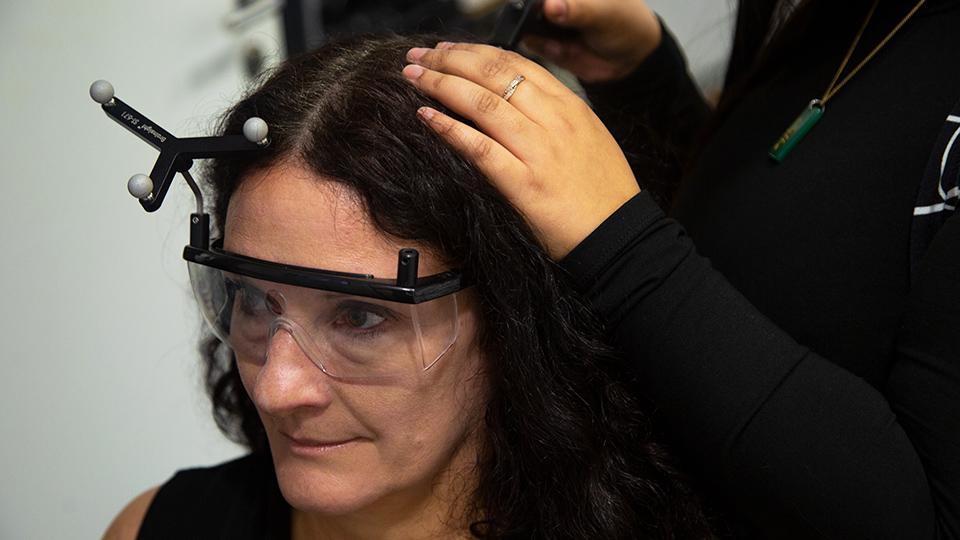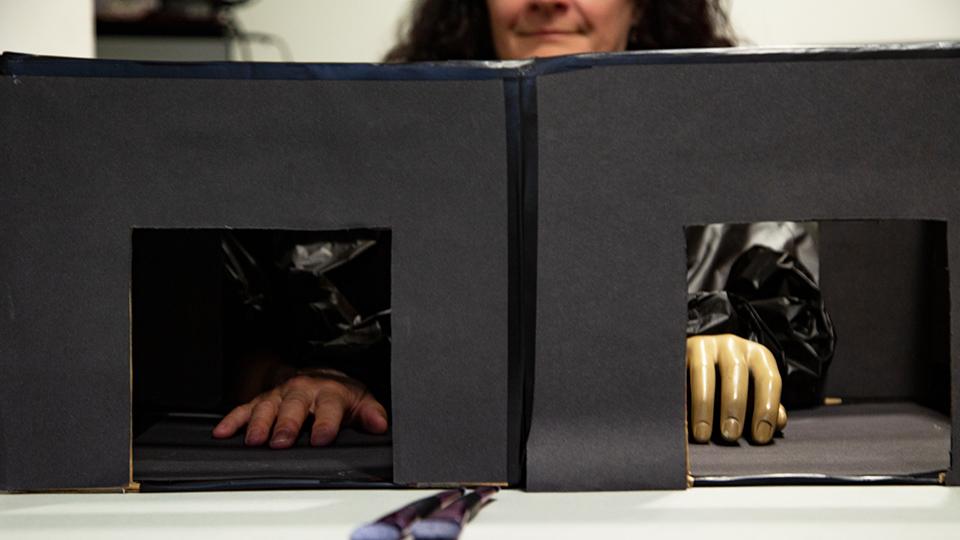Explore synaesthesia with Goldsmiths psychologists at Royal Society
Primary page content
Psychologists from Goldsmiths, University of London and the University of Sussex are at the Royal Society Summer Science Exhibition from 1-7 July, sharing new research on synaesthesia.

Mirror-touch synaesthete, Sheridan Orr
Synaesthesia is an experience of senses merging, or occurring together, in an unusual way. Synaesthetes might taste words, see them in colour, hear sounds in shapes, or visualise time laid out in front of them.
Professor Michael Banissy and Dr Natalie Bowling are particularly looking at mirror-sensory synaesthesia: when people feel physical sensations on their own body that they see happening to another person. For instance, some people, known as mirror-touch synaesthetes, report experiencing touch on their own body when viewing touch to others. Only 1.6% of the population are believed to experience this.
Visitors to the Royal Society’s annual showcase will have a chance to chat with people who have synaesthesia themselves, including a Sussex student who has chosen to study his own condition; a violinist who has created a violin which lights up in the colours in which she sees musical notes; an artist who paints voices; and a man who tastes something different for each stop on the London tube map.

Staff and students from Goldsmiths and Sussex will be providing hands-on demonstrations. An interactive ‘rubber hand illusion’ (pictured above) will give an insight into mirror-sensory synaesthesia by making you think a rubber hand is your own; while a magic mirror for kids demonstrates how perception and reality can be confused.
The team are also exploring how synaesthesia might be able to help blind people to see with sound. They will be collecting information from visitors through the ‘Bouba Kiki’ game: which nonsense words belong to which shapes, and do other people agree with you? They’ll also be testing how good people are at perceiving emotions.
Professor Michael Banissy, Co-Head of the Department of Psychology at Goldsmiths, said: “I’m really excited that we are going to be able to share our work at the Summer Science Exhibition. We’re seeking to understand synaesthesia and use the experience as a way to explore human perception in us all. For instance, we’ve examined mirror-sensory synaestheisa - where people report feeling the tactile sensations or pain of others - as a way to explore the social mind. We’re trying to use this understanding to develop tools that may be useful to aid empathy.”
Professor Banissy’s research lab at Goldsmiths integrates social neuroscience and experimental psychology to investigate how people perceive, interpret, and interact with others.
His team’s prior research indicates that people who experience mirror-touch synaesthesia show heightened levels of emotional reactive empathy - the ability to understand and share the affective states or feelings of others. They are also better than the rest of us at recognising the facial emotions of others. These findings have helped to develop behavioural interventions that have been shown to modulate empathy in non-synaesthetes.
The Goldsmiths and University of Sussex exhibition is one of more than 20 interactive displays demonstrating and engaging visitors with the very latest advances in science. With access to hundreds of scientists, the Summer Science Exhibition offers a unique opportunity to explore the science shaping our future with the people making it happen.
Visit the Royal Society website for the full programme of exhibitors, talks and activities and the Banissy Lab pages for details of ongoing research.